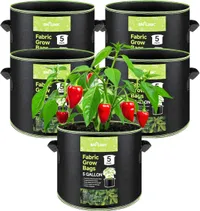5 easy vegetables to grow in pots in June
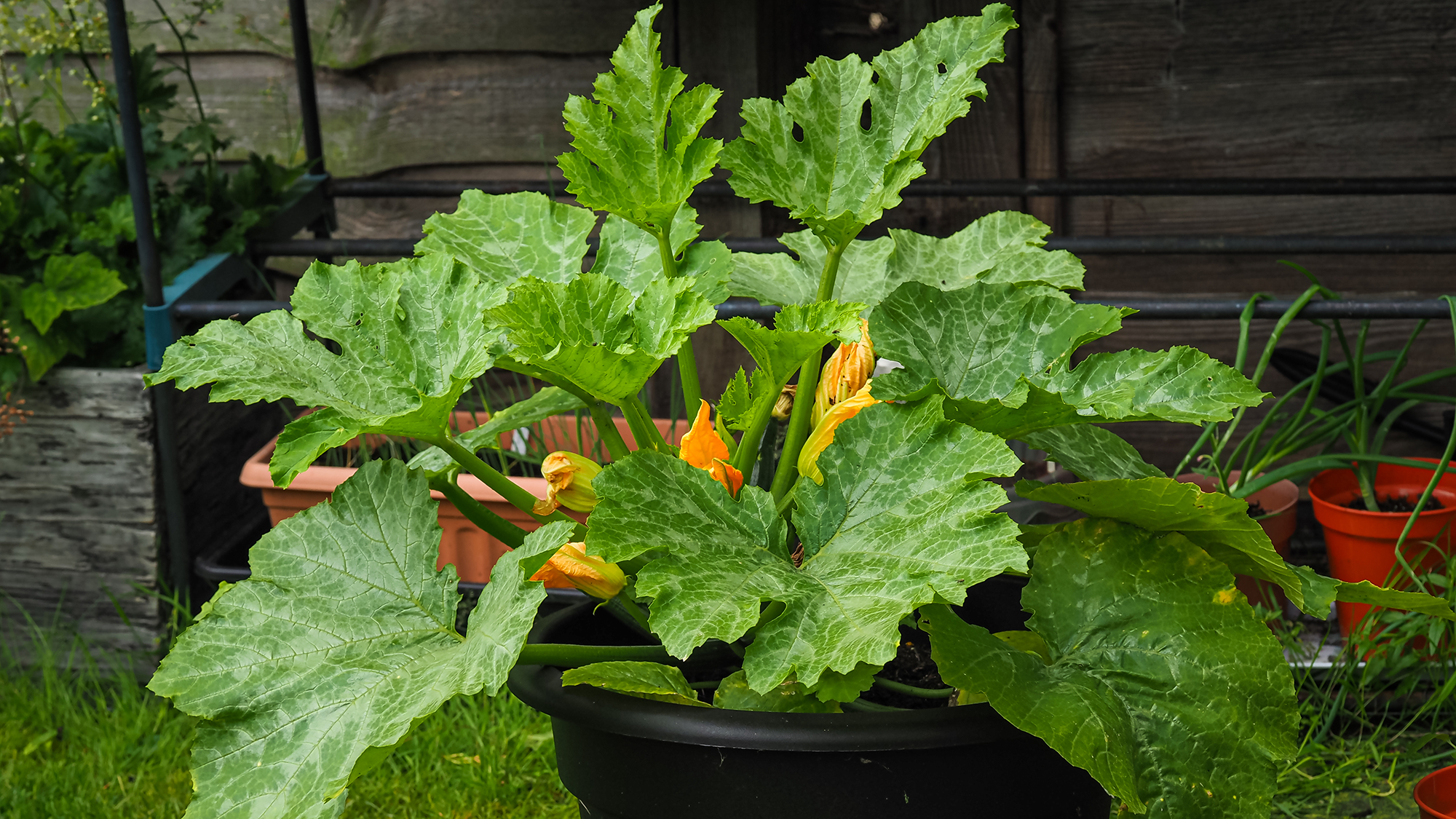
You don’t need a large garden to grow your own vegetables. Although having a dedicated vegetable patch is ideal and will give you ample room to grow a whole range of crops, it’s still possible to harvest tasty vegetables grown in pots.
So, whether you have a balcony garden, a small patio, or a decking area, you can still enjoy the experience and the end result of growing an edible garden, regardless of the size of your outdoor space. And, even if you do have a larger plot, there’s no reason why you can’t add a few vegetable pots to your patio.
The Royal Horticultural Society (RHS) states that although vegetables can be grown all year round, the most popular time is between April and October. And while the first few months have passed, there’s still time to get planting.
Even if you’ve already got a crop of vegetables growing in your yard, you can still plant these 5 easy vegetables in pots in June.
5 vegetables to plant in containers this June
1. Radishes
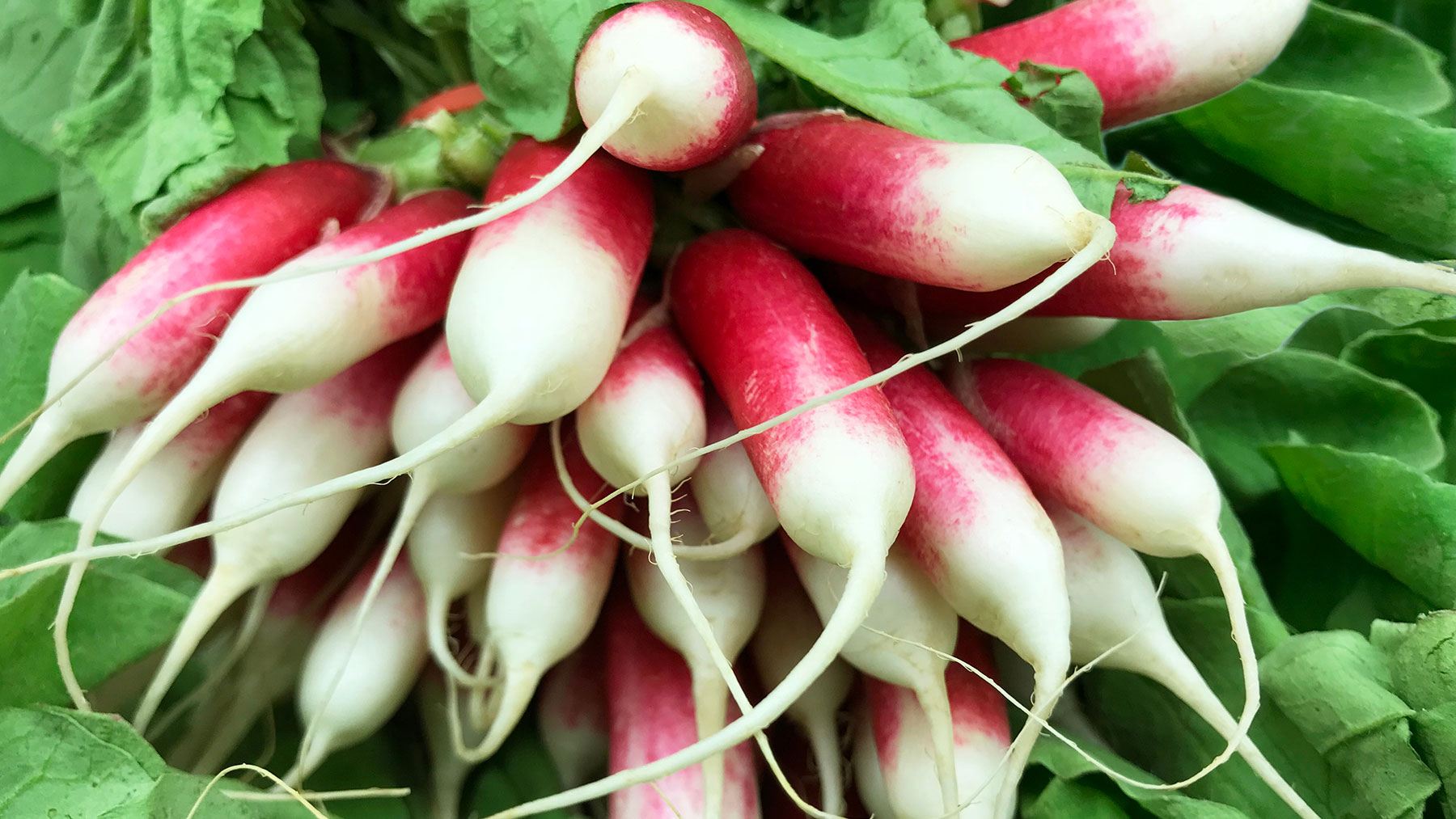
If you fancy something hot and fiery to add to your summer salads, radishes are the perfect vegetable to grow. And apart from adding some heat, they’ll add a touch of bright red too.
Calum Maddock, gardening expert at HomeHow says, “Salad radishes are quick and easy to grow from seed and can be grown in even the smallest of spaces. Thanks to their short roots, they are one of the best vegetables to grow in pots and will not need overly large containers to flourish.”
They are also quick to mature and will usually be ready to harvest in as little as three weeks, making them a great choice for budding young gardeners.
Get instant access to breaking news, the hottest reviews, great deals and helpful tips.
For best results, Maddock says, “Plant them in a pot with a diameter of at least 8 inches and a depth of 10 inches. They will require regular watering to keep the soil moist, ensuring even growth and succulent roots that don’t split.”
2. Spring onions
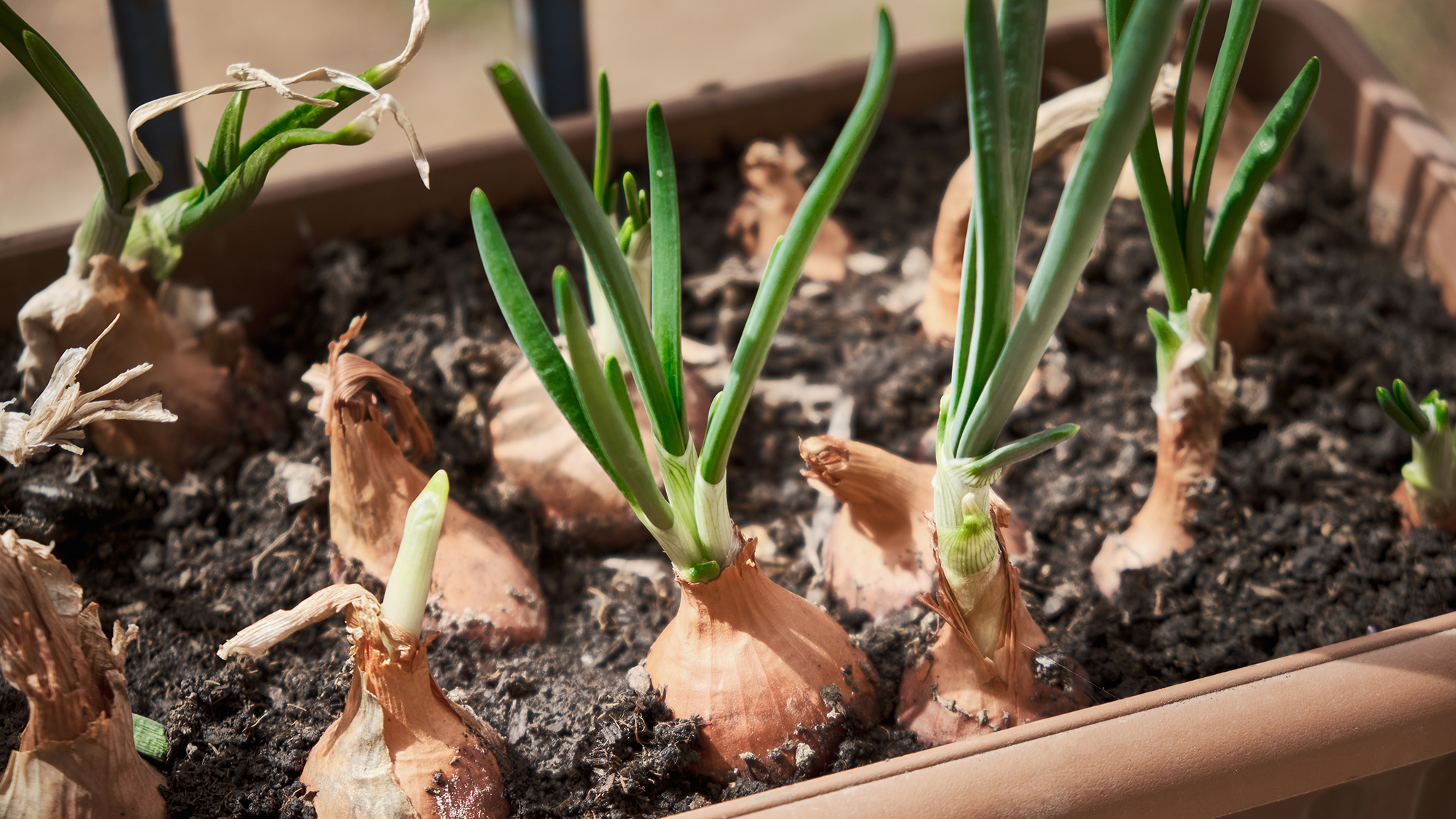
Spring onions, also known as scallions, are another easy-to-grow vegetable that can be added to summer salads, stir-fries, and a whole host of other dishes.
Maddock says that spring onions don’t require much space to grow, which makes them ideal for growing in pots. He advises planting spring onion seeds in pts with a diameter and depth of at least 12 inches.
“Place the pots in an open, sunny site and add rich, well-drained soil that should be further prepared by adding a good quality fertilizer,” he says.
Then, once planted, he adds, “Make sure that you keep your crops well-watered so that the soil does not dry out.”
Spring onions are usually ready to harvest about eight weeks after sowing. The most well-known variety is White Lisbon, which is particularly fast-growing and reliable.
These heavy-duty and affordable grow bags are ideal for container gardening on a budget. Made from 300g of BPA-free, non-woven fabric, these grow bags come in a pack of five, meaning there's enough for each of the vegetables mentioned in this article!
3. Kale

One vegetable I’ve been eating more of recently is kale, and I’m not the only one enjoying this green-leafed veggie. In recent years it’s achieved superfood status.
“It’s tasty, nutritious, and easy to grow,” says Maddock, “Kale is a member of the cabbage family and works wonderfully both as mini salad leaves and tasty greens for cooking or adding to smoothies.”
When choosing a variety to grow in a pot, Maddock recommends selecting a dwarf or compact variety, such as Dwarf Green Curled kale. He also suggests mixing it up, “You can even grow one or two kale plants in a pot along with your annual flowers or perennials.”
You can buy kale plants from your local nursery or opt to grow this vegetable from seed. Whatever you choose, Maddock suggests growing kale in a pot that is at least 12 inches in diameter, with 8-10 inches depth for root growth. It will also benefit from a well-draining potting mix.
The joy of growing kale, apart from it looking ornamental, is that once you harvest it, it will keep on giving. This means you don’t have to rely on an abundance of plants for a plentiful harvest.
4. Zucchini

Zucchini is one of my favorite vegetables to grow in my backyard, as I enjoy adding it to all sorts of dishes, including risotto and even bread. Additionally, it’s a prolific crop, and I’ve only ever needed to grow two plants to achieve a bumper crop. Although if you have space to grow more, your friends, family, and neighbors will be able to enjoy the fruits of your labor, too.
If you don’t leave it too late in June, there’s still time to plant zucchini seeds, place the seeds one inch deep and position the pot in plenty of sun, keeping the soil moist. Alternatively, zucchini plants can be potted straight into your container.
It’s best to choose a bush variety of zucchini when growing in a pot, such as Cue Ball and Bush Baby. And the plants will appreciate a pot that’s at least 18 inches wide, with plenty of drainage holes to avoid root rot.
Zucchini plants require a lot of nutrients, so choose an enriched soil and feed them every one or two weeks with a high-potash feed — a tomato feed is ideal.
5. Beets
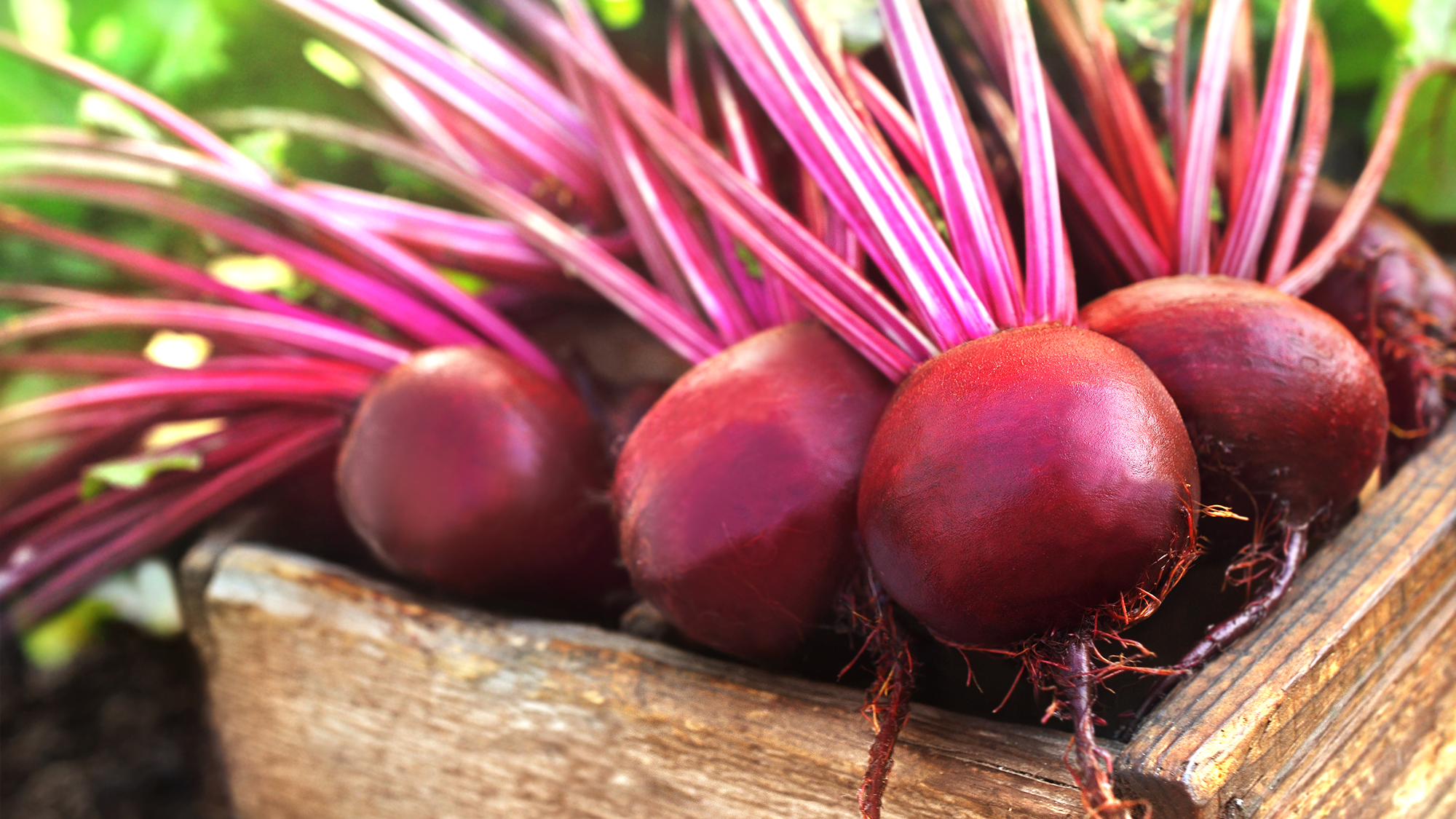
I grew up watching my grandma cooking up fresh beets pulled straight from the soil. But despite seeing the growing process from seed to plate, I never quite appreciated the taste of beets. A few decades on, it’s now one of my favorite vegetables to add to a summer salad.
Apart from cooking this colorful vegetable, beets can be eaten raw, pickled, and even roasted. It’s a versatile vegetable that also adds a burst of color to a plate, and as an added bonus the leaves are also edible.
When growing beets in pots, it’s best to choose a round variety rather than an elongated one, which will require a deeper pot. Fill the pot with multipurpose soil, sow the seeds thinly (about 8 inches apart) and cover with compost before giving the soil a light water. Then, position the pot in a sunny position.
What you need to know when planting vegetables in containers
The RHS advises that smaller pots can result in the vegetable plants not receiving sufficient moisture and nutrients and recommends aiming for a pot that is at least 18 inches deep and wide. If you plant your vegetables in anything smaller, they will need watering and feeding more frequently.
Watering your vegetables in pots
One issue of growing vegetables in pots is that it’s easy to overwater them. This can lead to waterlogged roots, which ultimately results in root rot and a very poorly performing plant. Overwatering also causes a depletion of nutrients as they get washed away.
However, vegetables in pots rely on being watered, as their roots are restricted and can’t pull in moisture from a wide area, like vegetables planted directly into the soil. To avoid overwatering, the RHS recommends keeping the compost moist rather than soggy.
You might also be interested in 11 vegetables to grow in July.
More from Tom's Guide
- Discover 9 easiest vegetables to grow for beginners
- And 7 mistakes to avoid when growing vegetables
- Plus, 7 ways to increase yield from your tomato plants

Camilla is the Homes Staff Writer and covers everything to do with homes and gardens. She has a wealth of editorial experience, mounting over 30 years, and covers news and features, tests products for reviews and compiles buying guides.
Her work has appeared in business and consumer titles, including Ideal Home, Real Homes, House Beautiful, Homebuilding & Renovation, and Kitchen & Bathroom Business. She’s even appeared on the cover of Your Home, writing about her own house renovation.
Although she’s obsessed with decorating her home, she also enjoys baking and trying out the latest kitchen appliances. But when she’s not inside, you’ll find her pottering about in her yard, tending to her vegetable patch or taking in her prized hydrangeas.
You must confirm your public display name before commenting
Please logout and then login again, you will then be prompted to enter your display name.
